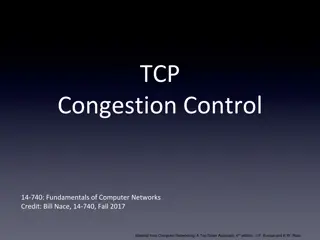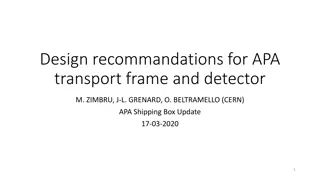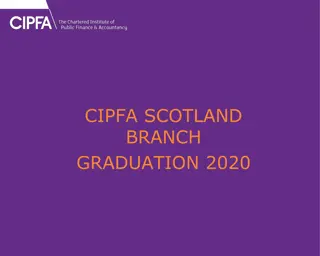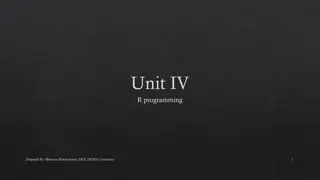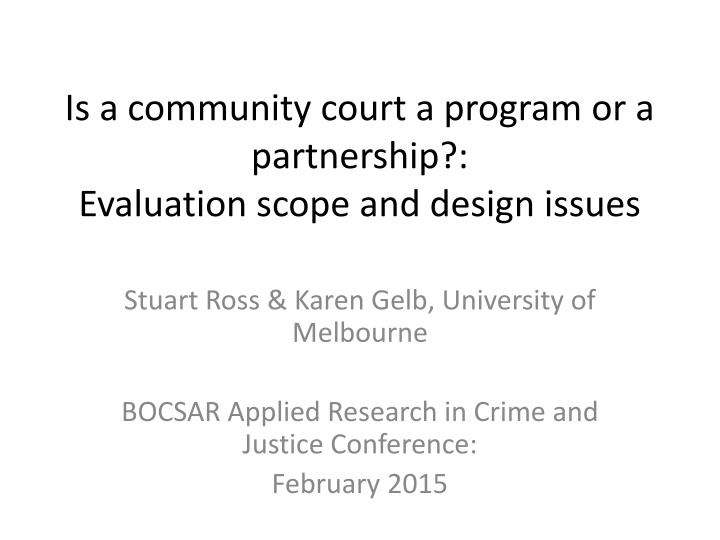
Community Justice Partnerships and Programs Evaluation Scope
Explore the evaluation scope and design issues of community justice partnerships and programs, focusing on collaborative governance, problem-solving courts, and the impact on justice outcomes. The Neighbourhood Justice Centre goals aim to prevent crime, enhance community engagement, and transfer effective practices to other courts and communities.
Download Presentation

Please find below an Image/Link to download the presentation.
The content on the website is provided AS IS for your information and personal use only. It may not be sold, licensed, or shared on other websites without obtaining consent from the author. If you encounter any issues during the download, it is possible that the publisher has removed the file from their server.
You are allowed to download the files provided on this website for personal or commercial use, subject to the condition that they are used lawfully. All files are the property of their respective owners.
The content on the website is provided AS IS for your information and personal use only. It may not be sold, licensed, or shared on other websites without obtaining consent from the author.
E N D
Presentation Transcript
Is a community court a program or a partnership?: Evaluation scope and design issues Stuart Ross & Karen Gelb, University of Melbourne BOCSAR Applied Research in Crime and Justice Conference: February 2015
Presentation outline Summary of the T&I paper Standard governmental evaluation metrics Methodological problems with this approach Problem solving courts as a form of collaborative governance Evaluating collaborative governance Example of Primary Care Partnerships Translate PCP program logic into justice outcomes
Criminal justice programs and partnerships Program: a therapeutic or developmental or support intervention that targets one or a small number of related deficits eg cognitive skills training, post-release housing Partnership: collaborations in delivering or coordinating services that address a range of needs in a target population common in health and human services sectors, not so common in justice eg Primary Care Partnerships, Integrated Family Violence service networks
Community justice as a partnership NJC offers multiple rather than single interventions NJC as an assessment and service gateway Important outcomes take place outside the NJC Community justice is a place-based strategy where community engagement is a core element
Neighbourhood Justice Centre goals Prevent and reduce criminal and other harmful behaviour in the City of Yarra by Improving the community s capacity to prevent and manage the impacts of crime/harm providing dispute resolution and restorative justice practices enhancing offender accountability and thereby reducing recidivism Increase confidence in and access to the justice system for the Yarra communities through two-way engagement between the justice sector and Yarra Communities improving community understanding of legal and human rights providing support services to victims of crime Further develop the NJC justice model and facilitate the transfer of its practices to other courts and communities
Program evaluation outcomes for community justice Evaluation outcomes consistent with program orientation & DTF evaluation guidelines Reduced crime rates Improved order compliance Reduced recidivism
Limitations to this approach The problem of attribution Order compliance needs to take into account the risk profile of offenders Recidivism measures also require the measurement of a range of covariates (risk- dependency) and relatively large group sizes (~200)
Order compliance outcomes by assessed risk level Table 1: Proportion of unsuccessful orders finalised from July 2008 to June 2011. Site Low Risk Moderate Risk High Risk Total NJC 25.6% 13.6%** 23.1%** 22.8%* Comparison 1 19.3% 34.0% 61.5% 29.7% Comparison 2 14.9%** 36.5% 62.7% 30.9% Comparison 3 18.9% 42.6% 72.7% 37.0%* Comparison 4 23.5%* 40.4% 63.9% 37.4%* State-wide 18.1% 35.3% 59.9% 30.1%
Survival functions for NJC and matched comparison group
Evaluating collaborative interventions at the NJC Multiple versus single interventions Need to be able to scale the investment in each participant and look for the relationship between this investment and the individual and social outcomes that are produced Service gateway role Engagement and retention rates for services delivered within and outside the NJC Does partnership-based referral change the quality of service provider interactions with clients? (eg as a result of compliance reporting obligations) Positive or negative interactions with other service requirements
Evaluating collaborative interventions at the NJC Measuring outcomes that take place outside the NJC Compliance or retention with treatment/support services Self-directed care Long-term (> 1 year) health, mental health, housing outcomes, financial security Community justice is a place-based strategy where community engagement is a core element Engagement with local organisations/social capital Service integration outcomes
Challenges for evaluating collaborative interventions Need for more developed theory around partnership based interventions Eg integrated family violence services Hidden and indirect costs and benefits: allocative and distributional transfer effects How much of the outcomes from community justice represent new versus transferred outcomes? Do CJS initiated outcomes compete with outcomes in other sectors? (eg Housing)
What is the counter-factual? Measuring the costs of doing nothing Conventional CBA analysis examines monetised benefits of outcomes against marginal costs (usually costs of avoided negative outcomes versus intervention supply costs) But costs of doing nothing are not necessarily zero. Access Economics estimate for annual cost of family violence of $4.5 billion, homelessness costs of $1M to $5.5M per person to age 21 But we lack do nothing estimates of the cost of many forms of social problems and disadvantage
Application to other justice partnership/programs Potential application of this approach to partnership/programs that offer multiple interventions, act as a service gateway, where outcomes take place outside the program boundary: Integrated family violence service networks Post-release support programs Multi-systemic therapy approaches in juvenile justice Criminal justice / mental health programs







